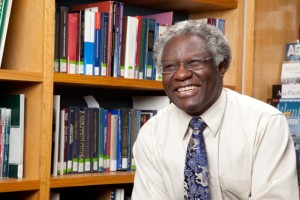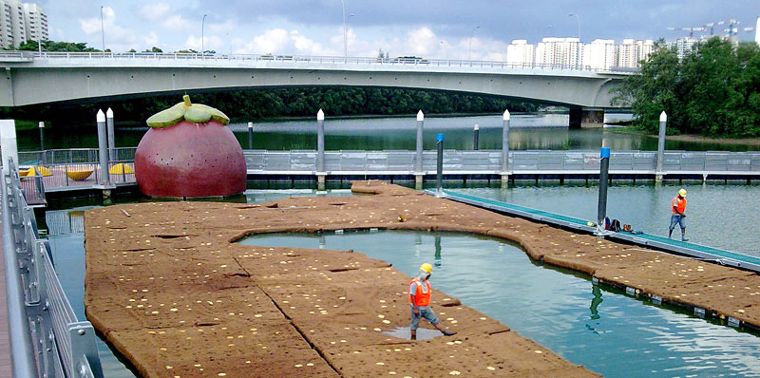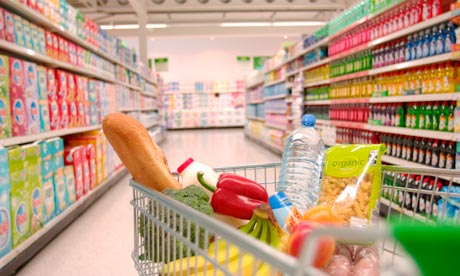June 11, 2013 — by Lisa Palmer
In the processing department of a fish supplier in Alaska, the director of purchasing strategy for Bon Appétit Management Company, a California-based food-service company, noticed chunks of salmon left on the skin after workers boned and filleted the fish for market. “What are you planning to do with these?” she asked the fish processor, who told her the remnants would be crushed and thrown into Prince William Sound. Seeing opportunity where others saw waste, she offered to buy the small pieces, called trim, if the supplier shipped them to San Francisco.
Once there, the trim was delivered to chefs employed by BAMCO, who were challenged to do something innovative with it. They created salmon burgers, salmon pad thai, salmon tacos and a wide variety of other meals.
The 26-year-old company, which serves 150 million meals per year to corporate employees, university students and museum goers in 32 states, has a long history of leadership in sustainable practices. Eliminating food waste like trim is just one example. Each of its 500 locations is under the direction of a chef who is required to buy at least 20 percent of produce from suppliers within 150 miles, a mandate that began back in 1999 when Maisie Greenawalt, vice president of strategy, established BAMCO’s Farm to Fork program. Another program, the company’s Low Carbon Diet, asks chefs to cut use of beef companywide by 33 percent, cut the use of cheese by 10 percent and eliminate airfreighted produce. And BAMCO was among the first food service companies to address the issues of antibiotic overuse, sustainable seafood, humanely raised meat and eggs, and farmworker welfare.
By empowering chefs to independently support sustainability, BAMCO is attempting to create the kind of food system it wants to see in America, rather than proceed with the industrial food system’s status quo. “How can we use every single part of our business to create that food system?” asks Greenawalt.
“There is no food service company that is close to Bon Appétit’s leadership on animal welfare issues.” – Josh Balk, director of corporate policy for the Humane Society’s farm animal protection campaign
The food service industry as a whole is increasingly moving toward sustainability. Wolfgang Puck Worldwide, a restaurant franchise and food product company, offers organic selections, serves vegetarian meals, and buys only sustainable seafood, cage-free eggs, crate-free veal and pork raised without gestation crates. Similarly, among other initiatives, the fast-food restaurant chain Chipotle Mexican Grill buys 100 percent of its pork from suppliers that don’t use gestation crates or antibiotics. Meanwhile, the large supermarket chain Whole Foods buys local produce, procures large quantities of meat from producers that treat animals humanely, and has collaborated with the Marine Stewardship Council, Blue Ocean Institute and Monterey Bay Aquarium to make its seafood selection as sustainable as possible. Even Burger King has gotten on the bandwagon, offering veggie burgers and promoting meatless Monday.
But BAMCO’s long history has made it a leader in such efforts. “There is no food service company that is close to Bon Appétit’s leadership on animal welfare issues,” says Josh Balk, director of corporate policy for the Humane Society’s farm animal protection campaign. “Specifically, their commitments of switching 100 percent of their eggs to cage free, eliminating gestation crates in their supply chain and sourcing … animal products from farms that pass third-party certification programs from credible animal-welfare organizations.” By 2015 at least 25 percent of the company’s meat and eggs will be from sources whose humane practices have been verified by four such organizations.
“We put a stake in the ground, and we want to make it a reality of what we promised,” says Greenawalt, adding that the company still has a lot of work to do to meet its 2015 goal of procuring pork raised without gestation crates. “The problem is, we don’t have enough suppliers lined up,” she says. “We are making promises faster than producers are making changes — and we are even willing to write the bigger check!”
While most of the company’s efforts have been in support of local producers, BAMCO’s focus is also international. When company chefs requested tilapia, it enlisted the help of Monterey Bay Aquarium Seafood Watch to find the only tilapia producer in China producing the fish sustainably (less than 5 percent of tilapia is produced in the U.S.). Despite its red list of all tilapia from China at that time, the Seafood Watch program gave BAMCO the green light as a commercial buyer. Why? “Because it would send a signal to everyone else in China that if you change your practices, you can get more sales,” says Greenawalt. “So we buy from one particular producer in China as a way to create a carrot incentive for the other producers to change their practices to be more environmentally preferable.” As a whole, China’s tilapia production has improved since the time BAMCO first started buying from its sustainable producer. Now tilapia from China is no longer red-listed but labeled a “good alternative” by Seafood Watch.
Large-scale factory farms are the company’s next target. “We’ve always supported small, local growers, but how can we change the big growers?” asks Greenawalt. “They’ve gotten away with a lot by being nameless and faceless to most consumers.”
Though not the biggest food-service company, BAMCO looks to punch above its weight, so to speak, and create change. “We are always pushing and striving to think of ways to leverage our brand and purchases to exert more pressure than our size commands, in order to make changes in the supply chain,” Greenawalt says. Still, Greenawalt understands that success in any area of food will only come if the product is something consumers will want to eat. “Don’t think we are so focused on sustainability that we forget that,” she says.
This story originally appeared in Ensia
 In July, Lisa Palmer was appointed public policy scholar at the Woodrow Wilson Center in Washington, D.C. She is conducting independent research and reporting on food, agriculture, the environment, and population. Her Wilson Center project, “Feeding a Hot and Hungry Planet,” will examine agriculture, population and climate change, with special emphasis on solutions-oriented perspectives across disciplines.
In July, Lisa Palmer was appointed public policy scholar at the Woodrow Wilson Center in Washington, D.C. She is conducting independent research and reporting on food, agriculture, the environment, and population. Her Wilson Center project, “Feeding a Hot and Hungry Planet,” will examine agriculture, population and climate change, with special emphasis on solutions-oriented perspectives across disciplines.
 The eyes of the world are on Brazil now as world cup soccer kicks off in Sao Paulo. In my latest article for the science research journal
The eyes of the world are on Brazil now as world cup soccer kicks off in Sao Paulo. In my latest article for the science research journal 


